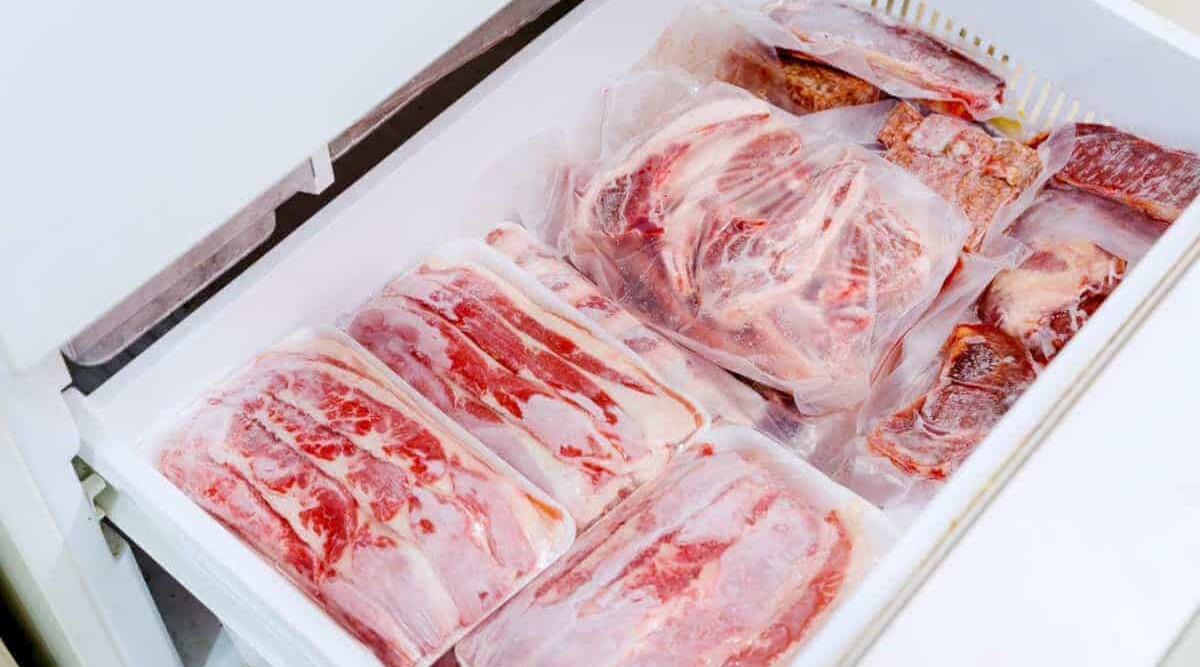
In this article, we talk about how to store meat safely and effectively in a refrigerator or freezer.
We also discuss freezer burn and how to prevent it, and tackle the ultimate question: how long can you store meat?
For a BBQ enthusiast, Nirvana is getting the urge to grill and heading straight to the backyard to fire up the coals or burners. What sucks is finding out you’ve run out of propane, or charcoal, or — worst of all — meat.
That’s why we tend to stock up. We buy in bulk, buying full or half animals from the butcher, pouncing on sales, or picking up reduced meats approaching their best before dates.
Plus, it’s great to have a selection on hand to choose from and not have to hit the store because you want burgers and not brisket.
But how should you store all this meat? Fridge or freezer? Wrapped, bagged, or boxed?
The answers are waiting below.
Jump to:
- 1 How Long Can Meat Be Kept in the Fridge?
- 2 How Cold Should I Keep My Fridge?
- 3 How Long Can You Freeze Meat?
- 4 How Cold Should I Keep My Freezer?
- 5 Does Meat Spoil in the Freezer Eventually?
- 6 Can I Defrost and Then Refreeze Meat? Is There Loss of Quality?
- 7 How do I Prevent Freezer Burn…and What Actually Is it?
- 8 Should I Wrap Meat Before Storing? What With?
- 9 A Tip on Freezing Meat
- 10 What if the Power to My Freezer Goes Out? Will all My Meat Spoil?
- 11 Final Thoughts
How Long Can Meat Be Kept in the Fridge?
Logic and experience tell us the refrigerator is a short-term storage solution for meat. We’ve all thrown out that jar of fuzzy pickles or sour cream. But what’s the best we can hope for with our meat?
That depends on what cuts we’re talking about. According to the U.S. government website FoodSafety.gov, your fresh steaks, roasts, and chops are good for up to 5 days, on average. That’s the same no matter if it’s beef, pork, lamb, or veal.
Uncooked hams are also good for up to 5 days.
It’s a whole different story with ground meats, though, including fresh sausage. For bird or beast, ground meat is only good in the fridge for a day or two. Basically, that’s enough time to thaw it from frozen in the refrigerator and use ASAP.
Whole poultry will also stay good in the fridge for 1 or 2 days. And, if you see a deal on hot dogs, grab them! An unopened package will remain safe to eat for up to 2 weeks.
By the way, it’s never a bad idea to place a plate or platter under your meat to catch any juices that may leak out, especially if you’ve thawed it in the fridge. You don’t want to make a mess or risk contaminating your other food.
How Cold Should I Keep My Fridge?
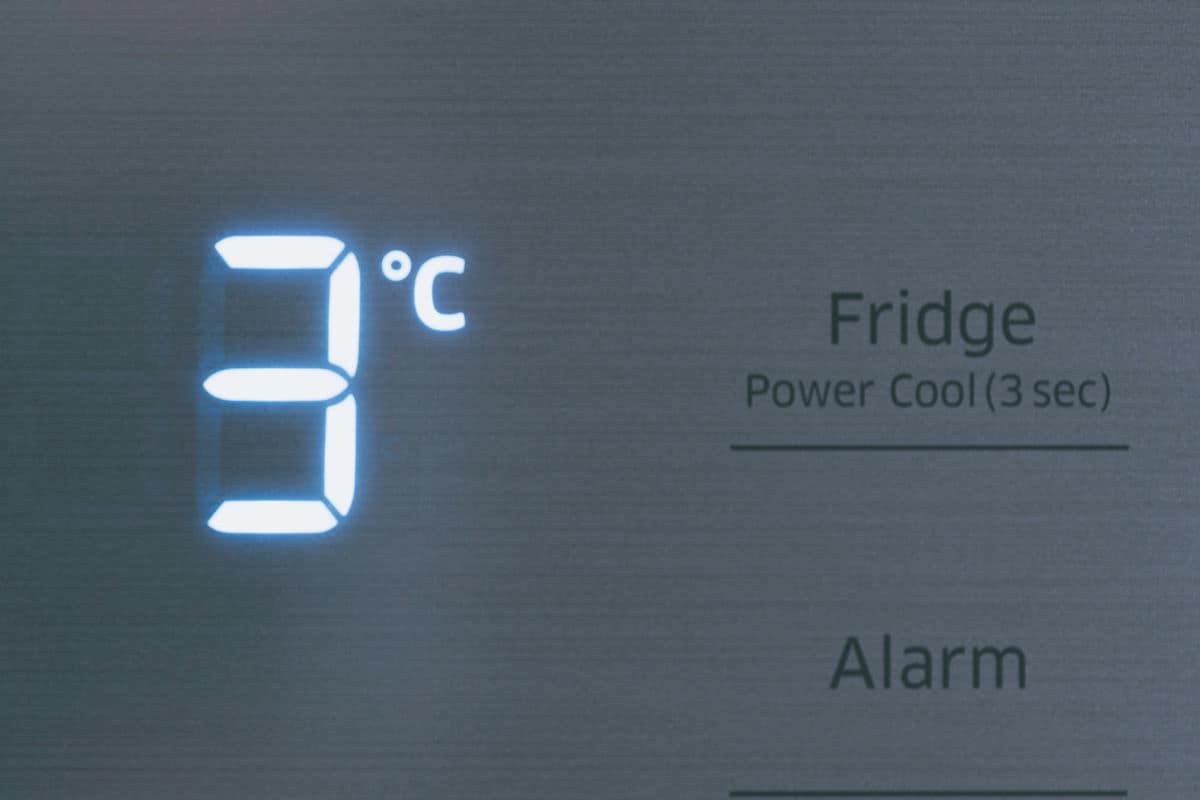
To keep your meat out of the bacteria “danger zone” (Anyone else singing Kenny Loggins?), set your fridge to 40F (4C) or lower, but above 32F (0C).
Since this temperature is critical to keeping food safe, check your fridge temperature with an accurate digital thermometer.
How Long Can You Freeze Meat?
I’ve heard stories of sled dogs in Siberia eating mammoth meat from ancient carcasses poking out of the permafrost. But for those of us with mere freezers, how long will frozen meat stay good?
Just like with the fridge, the answer varies depending on the kind of meat.
Whole cuts of beef, veal, lamb, and pork, you’re good for up to a year, though you may start noticing a decline in quality after 4 months.
For ground meats, you’ll want to use it up before it hits its 4-month anniversary on ice.
Sausages are the exception, however, and are only good for 2 months at most. The 2-month rule applies to hot dogs, as well.
Fresh ham should last up to 6 months, and whole poultry will be good for the grill for up to a year. Interestingly, chicken and turkey pieces have a freezer-life of just 9 months, according to FoodSafety.gov.
For Best Results, Freeze at the Peak of Freshness
It’s important to note that to maintain the best flavor and texture, you need to freeze meat at the peak of freshness. Because remember, it will be sitting around a while as it thaws.
Have a game plan in mind before you buy, for what you’re going to use in the next week, and what won’t see the grill for weeks or months. Immediately freeze anything in the latter category to increase its shelf life.
Here’s a cool tip: write the date on your meat packaging when you put it in the freezer. That way, there will never be a doubt as to what needs to be cooked ASAP and what can wait a bit longer.
How Cold Should I Keep My Freezer?
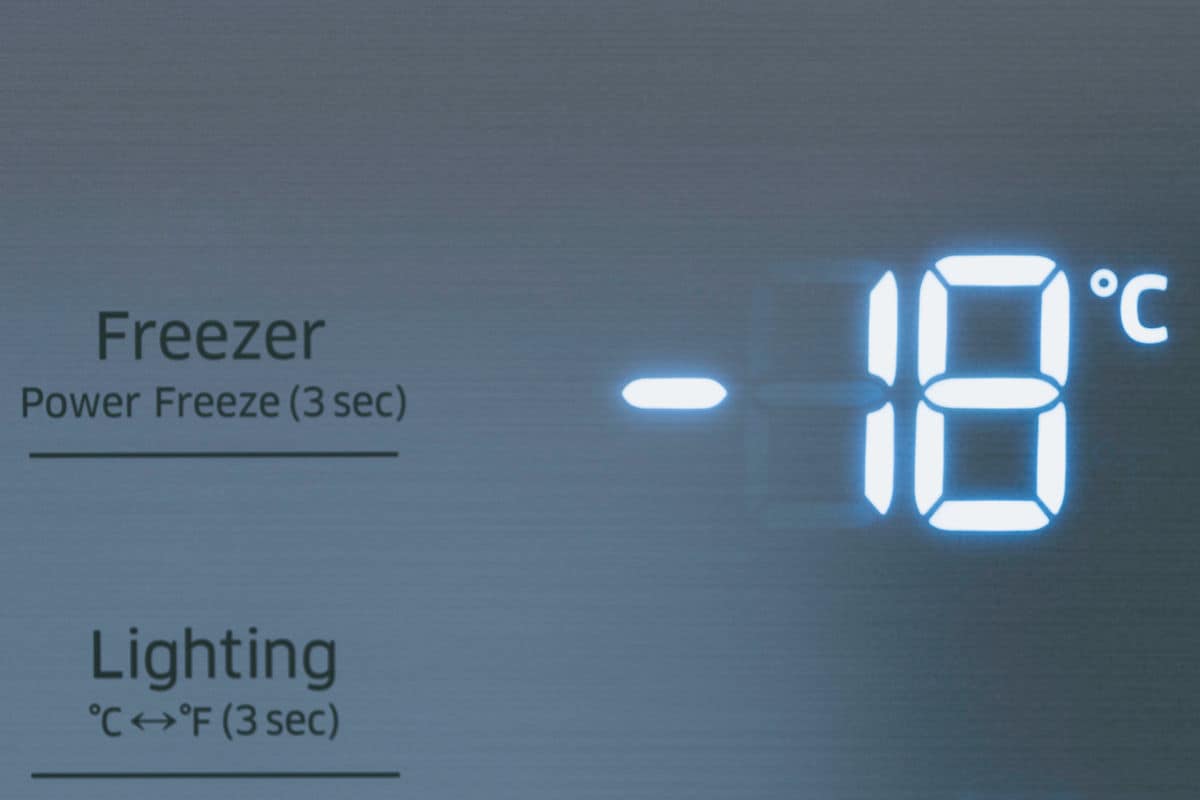
Water freezes at 32F (0C). Is that cold enough for freezing food? Technically, yes. But, that leaves you no margin for error when it comes to temperature fluctuations. Your meat should be kept at consistently low temperatures as possible.
Opening and closing the door frequently makes it tough for your freezer to hold the cold. For that reason, you should set its temperature much lower than freezing for the good of your meat. The USDA recommends 0F (-18C) for frozen food.
Tips for keeping your cool:
- If you can’t maintain that low a temperature in your regular kitchen freezer — maybe due to age, or repeated visits for ice cubes and ice cream — consider purchasing a dedicated unit for long-term food storage.
- Stand-alone freezers take up a lot of room, especially the horizontal kind. Many people end up keeping theirs out in the garage or on an enclosed porch. However, these spaces rarely enjoy the consistent temperatures found inside your home. To stay cold, your freezer may end up working harder than necessary. For the sake of your energy bill and your precious meat, try to find a home for it inside. An insulated room in the basement is ideal.
- If you’re really a meat hoarder, consider dedicating an entire freezer to meat to avoid any possibility of cross-contamination of other frozen foods.
Does Meat Spoil in the Freezer Eventually?
Storing meat at 32F (0C) or lower, prevents the growth of bacteria. Read that carefully. It doesn’t kill them, it prevents their growth. Any bacteria already present goes dormant as long as it’s frozen.
Since bacteria and other microbes are what cause spoilage and illness, as long as the meat is frozen, it remains safe indefinitely. So, in theory, that mammoth meat may actually have been safe to eat, assuming it froze before the carcass had a chance to rot, and it was found within a short time of it emerging from the ground.
That means your frozen meat is safe to eat for as long as you can keep it that way. If you’ve got a roast in the deep freeze that’s been there 6-years, and you know for certain it has never thawed one iota, you go right ahead and cook it. Just be sure to thaw it safely and cook it to the USDA-recommended temperature to kill the surface bacteria.
A word of warning, though: don’t expect it to taste any good.
While frozen meat remains safe to eat, there will likely be a significant drop in quality. It won’t make you sick, but it might taste awful. According to the USDA, that’s because the enzymes that cause food to degrade only slow down in the freezer. The degradation process continues, just at a slower rate.
So much for cryogenically preserving my body…
Can I Defrost and Then Refreeze Meat? Is There Loss of Quality?
It happens occasionally — you pull something out of the freezer for dinner that night, or maybe tomorrow, and suddenly plans change. Is all that good meat wasted if you can’t cook it when you meant to?
If you have a nagging voice in your brain (or ear) telling you can’t refreeze thawed meat, go ahead and ignore it. So long as you properly thawed it in the fridge, it’s perfectly OK to pop it back in the freezer to save for another day.
There’s some risk of a slight deterioration in quality, mostly due to loss of moisture, but it’s totally safe.
If possible, opt instead to cook the meat now and freeze it fully-cooked. You may find the results taste better than cooking what’s been through the freeze-thaw-refreeze cycle.
How do I Prevent Freezer Burn…and What Actually Is it?
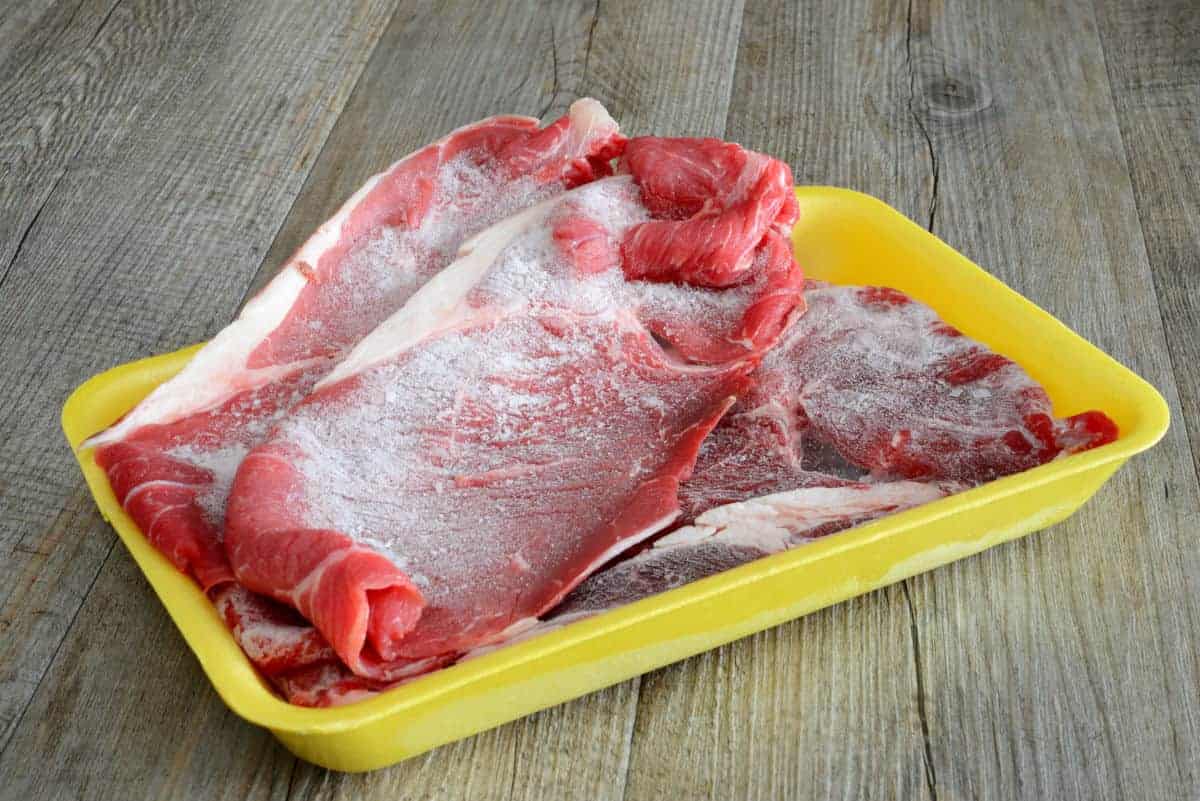
We’ve all found that lonely beef patty or ice cream bar hiding at the back of the freezer and eaten it. Usually against our better judgement, or that of our significant other. And it always sucks. You take one bite and say, “Ugh, that’s freezer burnt!”
So, what is freezer burn, and how do we prevent it — other than by not leaving food frozen for years?
Contrary to what you might think, freezer burn is not spoilage; your meat hasn’t gone bad. Freezer burn happens when air gets at your food while it’s frozen, causing localized dehydration. In other words, it gets dry patches. It is easily recognizable, usually showing up as white splotches or slight discoloration, accompanied by ice crystals on the surface of the meat.
While it isn’t unhealthy, it isn’t tasty, either. The texture of freezer burnt meat can be mushy, and the flavor is just “off” for lack of a better word. Plus, it takes away nutritional value. (And that’s why we’re all here, right?)
You could try cutting off the offending sections and hope the rest still tastes good. In some cases, though, you’ll have to chuck out the lot.
Since freezer burn is caused by air, the trick is to keep air away from your meat. You can do this by sealing it as tight as possible to protect it from the atmosphere.
In the next section, we’ll cover the many ways to wrap your meat for the freezer. (And the fridge, for that matter.)
Should I Wrap Meat Before Storing? What With?
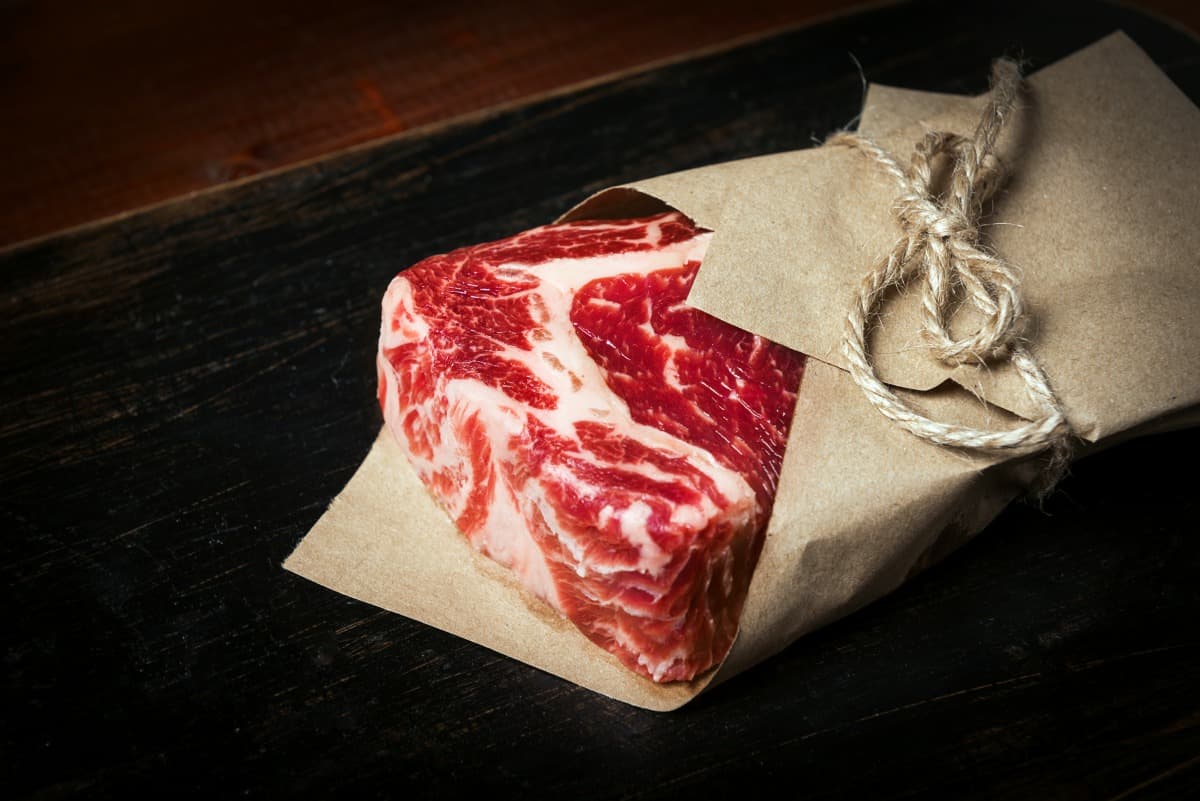
We aren’t primitives here — we don’t just throw loose meat into our fridges and freezers. Here’s a rundown of the options you’ve got for protection in storage.
Butcher Paper
This is that weird, heavy, pink or brown paper your meat comes wrapped in from the butcher. It’s perfect for short-term protection — assuming its wrapped tightly and sealed with tape. Meat that’s well-wrapped needs nothing else for refrigeration.
Many people also rely on butcher paper for freezing meat. While it does offer protection from freezer burn, there are better options for long-term storage.
Be sure to get genuine food-grade butcher paper; there are cheap knock-offs out there that people use for a variety of crafting purposes.
Freezer Paper
It looks a lot like butcher paper but feels like wax paper. It’s thinner than butcher paper, but freezer paper features a thin layer of plastic on one side for locking out moisture and holding in any fluids that seep out of the meat.
Tightly wrap your meat with the plastic-coated side facing in and tape it shut for excellent protection from the ravages of the cold. The only downside to freezer paper is a lack of availability — you won’t find it in every store. However…
Freezer Bags
Here’s something you will find in every store. The resealable plastic bag is probably the best thing to happen to food storage since the invention of refrigeration. They’re inexpensive, you can reuse them (after thorough washing), and they seal up tight as a drum.
Freezer bags are made from heavier plastic than regular sandwich bags, and the good ones have a more robust locking system, too. For extra protection, store meat wrapped in butcher paper inside a freezer bag.
Reusable Containers
While these may seem like the perfect answer for both long— and short-term cold storage, reusable containers have some flaws.
They’re great as a quick solution for tossing some meat in the fridge that you didn’t use. Think a couple of burger patties you didn’t use or half a package of hot dogs. They’re leak-proof, reasonably air-tight, and they stack nicely. Brilliant!
However, they aren’t the best choice for freezer storage.
Many flimsy plastic containers don’t seal perfectly, and it’s essential to keep air out. Also, they may become brittle over time and break. Not only does this expose your meat to the air, but it can also leave bits of plastic behind.
To recap: fine for the fridge, not recommended for the freezer.
Plastic Wrap
If you can keep it from sticking to itself, plastic food wrap is an excellent choice for storing meat — and you probably have a roll already. Wrap it nice and tight for optimal protection.
Because it’s so thin, plastic wrap is best as a short-term solution for storing meat. If you know up-front you’re going to bury this meat deep in the freezer for months, try something more robust.
Vacuum Sealing
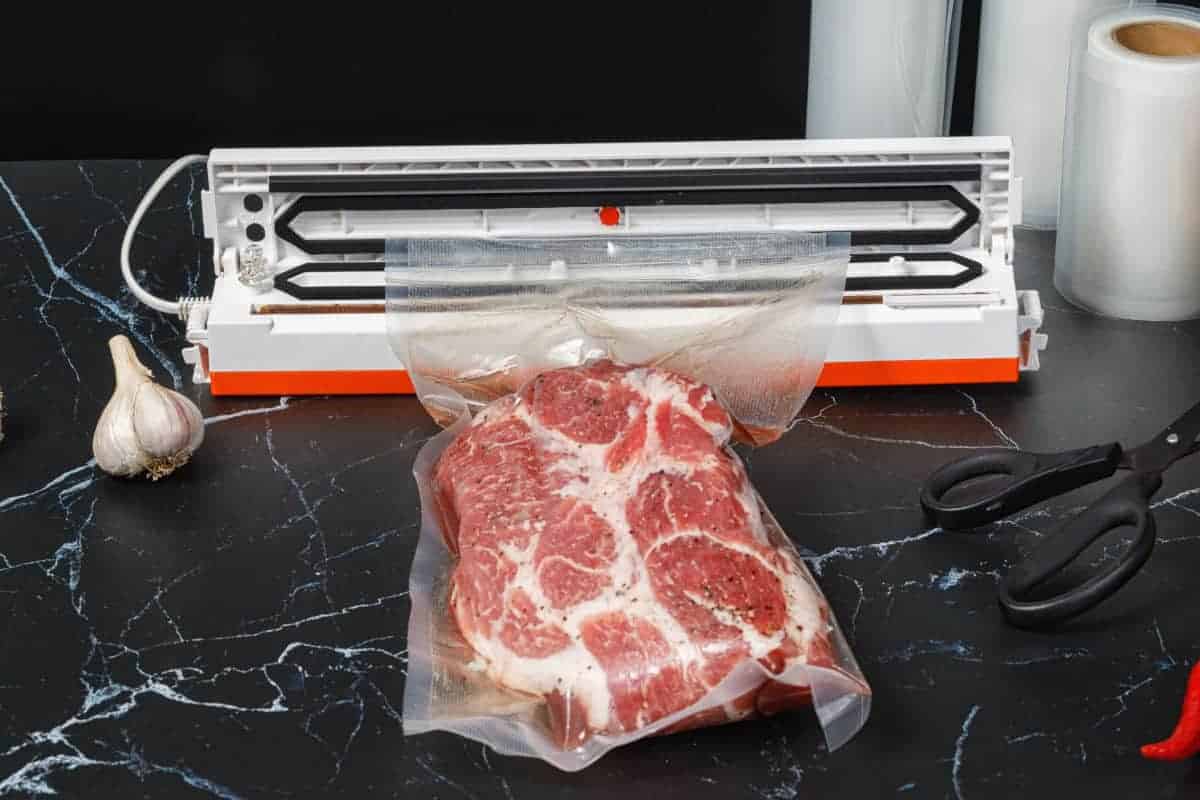
This is the ultimate freezer solution for any meat you want to save for months. By sucking all the air out of the pouch and heat-sealing the end, you get a perfect airless environment to lock in the freshness.
Vacuum sealing systems aren’t that expensive and are a great investment for any BBQ lover who can’t resist a great deal on meat. Plus, since the plastic comes in rolls, it’s like creating a custom fit for every cut. No more chopping a rack of ribs in two (or three) to fit it in a bag!
What you can’t fit inside, usually, are very large cuts, like brisket. But, for steaks, chops, chicken, and other small items, it’s ideal.
A Tip on Freezing Meat
Before wrapping or bagging meat for storage, it’s best to break it down into meal-size portions.
As pointed out at The Spruce Eats, frozen meat is difficult to separate. So, the fewer pieces you have packaged together, the easier time you’ll have when you want to thaw out your next choice for the grill.
What if the Power to My Freezer Goes Out? Will all My Meat Spoil?
Here’s where a deep-freeze unit enjoys a huge advantage over your standard kitchen fridge/freezer. If the power goes out, but you have every reason to believe it’ll come back in a reasonable time frame, just leave the lid closed and don’t worry.
Thanks to their excellent insulation, a full stand-alone freezer can keep your food safe for up to two days. If it’s half-full, you’ve got about a day to get things in order. You might want to quickly lift the lid and push everything together to conserve the cold, or you could head to the store for a few bags of ice to toss in.
Once the power is restored, inspect the contents of your freezer. If you see pools of liquid under your meat, that’s a clear sign the temperature went above freezing for some time. Best, in that case, to throw it out and anything the juices touched.
Be sure to clean out your freezer if this happens thoroughly.
If, however, you find everything is still frozen (telltale indicators include ice crystals and meat that’s rock-hard), all is well, and you can eat it as usual.
Final Thoughts
Well? Was this the coolest article you’ve read today? Are you feeling chill about storing meat long-term?
No one likes to waste money, so knowing how best to store meat can help you take advantage of sales and bulk buys, while also giving yourself the luxury of choice when it’s time to light the grill.
If you have any questions, please do ask! I’ll answer you as soon as possible, almost always within a day.
While you’re waiting, browse the site for even more tips, reviews, and guides to help you get the most out of your BBQ.
Thanks for being here and supporting the site!


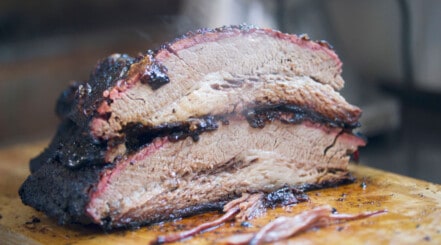
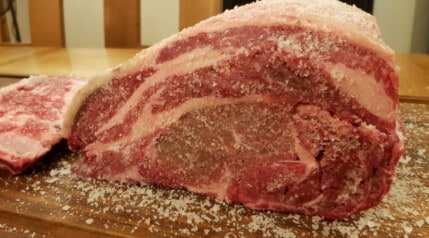
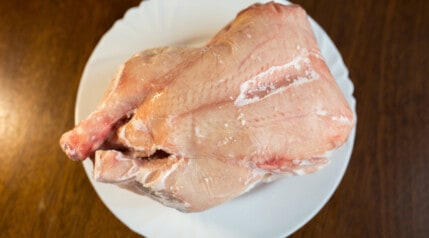
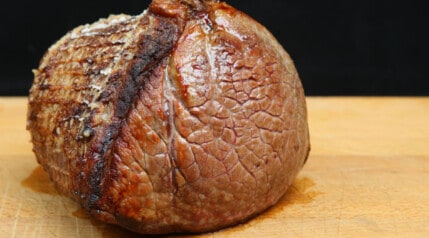
0 Comments